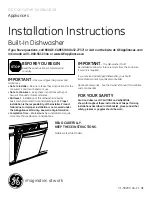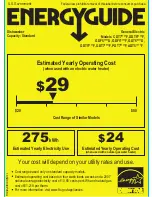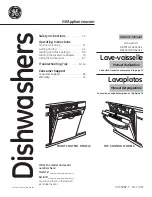
6 720 680 223
20
Installation instructions
3.4
Combustion air requirements
Twin pipe and Concentric pipe
The water heater is designed as a sealed combustion
appliance. It is recommended that the combustion air
be provided from the outside by a dedicated pipe (twin
pipe) or by connecting to the concentric vent kit (see
Fig. 8, 9 & 10). The combustion air pipe may be PVC
or any other rigid sealed 3” or 4" pipe. The combustion
air piping must pitch down 1/4 inch per foot towards
termination to prevent rain water from entering the
appliance. When using the twin pipe method,
combustion air inlet, whether terminating vertically or
horizontally,
must be located in such a manner as
to provide a minimum 3 foot clearance from the
exhaust vent terminator.
See Fig. 11 Letter I, page
12
.
For the maximum length of the combustion air
inlet pipe, see Table
6
.
Single pipe
Note: This appliance requires 9950 cubic feet of
available combustion air, or a minimum of 1243
square feet of space with an 8 foot ceiling to
operate. If the large amount of air space, which
equates to about half of most average sized
homes, is not available, the appliance must pull
air from outside (see twin pipe system above).
Although it is permissible to draw combustion air from
inside the structure, it is not the manufacturer’s
recommended installation method. Always install a 3
inch elbow on the top of the combustion air inlet
adaptor to prevent foreign objects from falling into the
unit.
If a single pipe installation is utilized, follow guidelines
below for providing adequate combustion air for the
water heater as well as any other appliances that may
consume air in the space. Always follow local codes if
they are more stringent.
When all requirements are followed, the unit will
operate properly and safely. However, there may still be
a risk of freezing due to negative draft if the other
combustion appliances in the building are not supplied
with sufficient combustion air. A wood stove or furnace
can pull its combustion air from the heater's vent pipe,
allowing the cold incoming air to freeze the cold water
in the heat exchanger. Supplying more combustion air
for all combustion appliances is the solution. A HVAC
specialist should be consulted to design solutions for
providing more combustion air. Observe the following
guidelines:
Installations in structures that have been tightly
constructed (air infiltration rate of 0.40 ACH or less)
must be provided with combustion air per the National
Fuel Gas Code. Consult a HVAC specialist if your air
infiltration rate is questionable.
The space must have two permanent openings, one
commencing within 12 inches of the top and one
commencing within 12 inches of the bottom of the
enclosure.
Each opening must have a minimum free area of one
square inch per:
• 1000 Btu/hr if all air is taken from inside the building
• 2000 Btu/hr if all air is taken from the outside by
horizontal ducts
• 4000 Btu/hr if all air is taken from the outside by
direct openings or vertical ducts.
Or the space must be provided with one permanent
opening or duct that is within 12 inches of the ceiling of
the enclosure.
This opening must have a minimum free area of one
square inch per:
• 3000 Btu/hr if all air is taken from the outside by a
direct opening or vertical duct.
Louvers, grills and screens have a blocking effect. If the
effective free area is not known, increase the sizes of
your openings by 300% if your louvers are wood and by
43% if your louvers are metal. Refer to the National Fuel
Gas Code for complete information.
Warning:
In areas where outside
temperatures routinely come close to
freezing, sealed combustion operation
is required. Use twin pipe or concentric
terminations for combustion air and
exhaust, which must be installed on the
same wall or roof surface, however
never facing the direction of prevailing
winds. Failure to do so may result in
heat exchanger freezing up and
bursting. This failure is not covered
under the manufacturer's warranty.
Warning:
When installed in an
environment where corrosive chemicals
or dirty air (e.g. hair salons, car washes)
are present the twin pipe system is
required.
Warning:
Vent terminations must
prevent
rain
from
entering
the
combustion air and exhaust vent piping.
















































